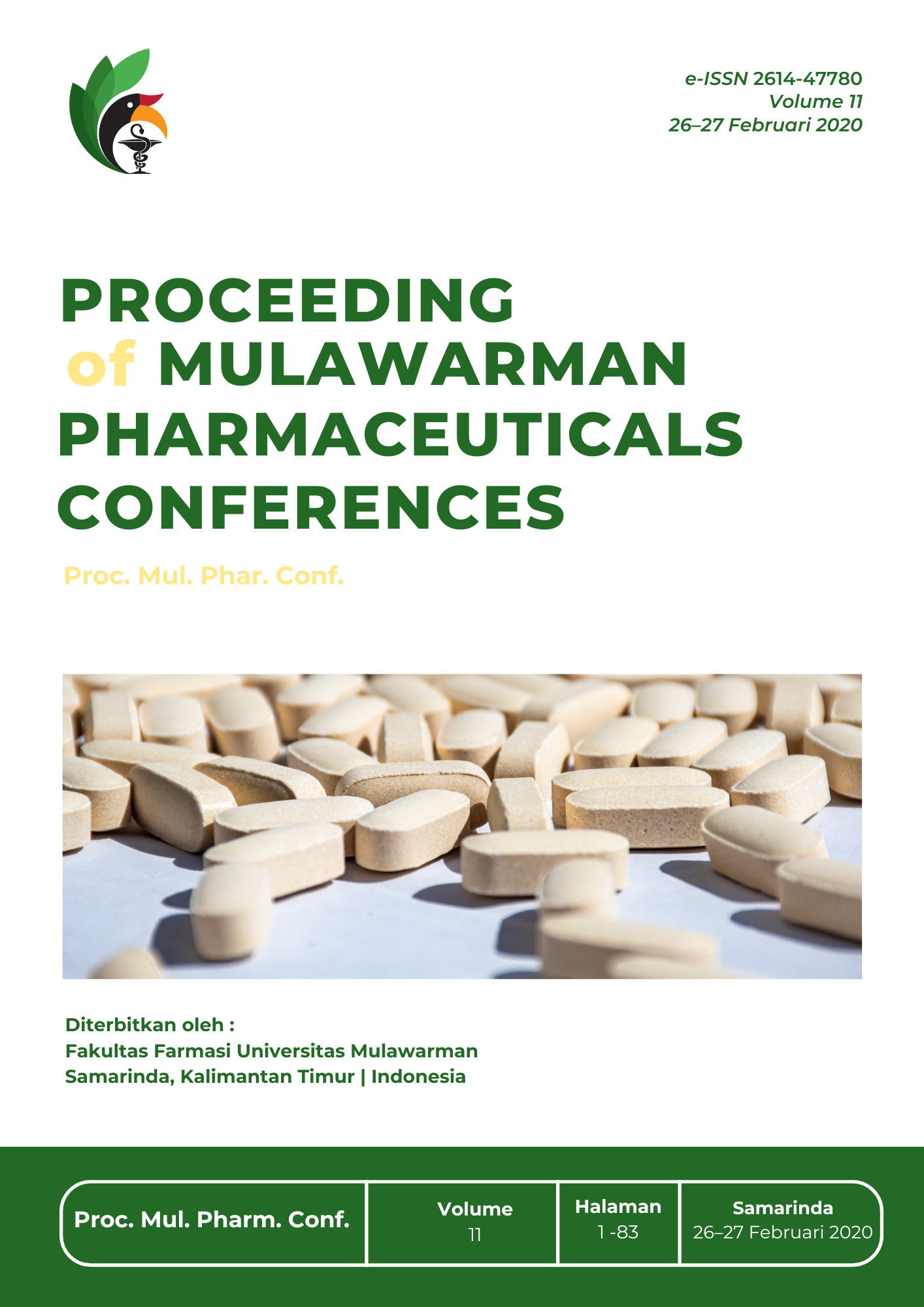Karakteristik Rumput Banto (Leersia hexandra Sw.) Berdasarkan Makroskopik dan Mikroskopik
DOI:
https://doi.org/10.30872/mpc.v11i.215Keywords:
Leersia hexandra Sw., characteristics, Macroscopic, MicroscopicAbstract
Banto (Leersia hexandra Sw.) is a weed that is often used as animal feed, which is used to remove toxins in the body. The research to study the characteristics of Banto macroscopically and microscopically. A macroscopic test were carried out directly on the physical properties of Banto. Then a microscopic test of Bantos powder simplicia was conducted using a microscope. The result of the macroscopic examination of Banto show that Banto has smooth stem segments, roots on the stem segments, height can reach 1 m, leaf width reaches 0,4 cm-1 cm, leaf length is 5 cm-23 cm, the sides are rough and have sharp edges. For the results of the microscopic examination of fresh grass at 40× magnification and 100× magnification showed the presence of epidermis, stomata, and chlorophyll. The result of microscopic study of Banto simplicia at 40× magnification and 100× magnification showed the presence of epidermis and chlorophyll.
References
[1] Prabowo, H., Cahya, I.A.P.D., Arisanti, C.I.S. dan Samirana, P.O. (2019). Standardisasi Spesifik dan Non-Spesifik Simplisia dan Ekstrak Etanol 96% Rimpang Kunyit (Curcuma domestica Val.). Jurnal Farmasi Udayana, Vol 8, No 1, Tahun 2019, 29-35.
[2] Rizqiyah, A. H. (2014). Uji Sitotoksik Akar Rumput Bambu (Lophatherum gracile B.) dengan Variasi Pelarut Melalui Metode BSLT dan Identifikasi Golongan Senyawa Aktifnya. Universitas Islam Negeri Maulana Malik Ibrahim Malang.
[3] Aliyu, M. A., Abdullahi, A. A., & A.Y., U. (2017). Antioxidant Properties of Selected Poaceae Species In Kano ,Northern Nigeria. European Journal of Biomedical and Pharmaceutical Sciences, 4(5), 577–585.
[4] Aliyu,M. A., Abdullahi, A. A., & A.Y., U. (2017). Toxicity Screening of Selected Poaceae Species In Kano , Northern Nigeria. World Journal of Pharmaceutical and Medical Research, (May), 135–139.
[5] Danielle, C. B., Tcheutchoua, Y. C., Désiré, P., Dzeufiet, D., Lauré, D., Fokou, D., Kamtchouing, P. (2019). Antihypertensive Activity of Leersia hexandra Sw . ( Poaceae ) Aqueous Extract on Ethanol-Induced Hypertension in Wistar Rat, 2019. https://doi.org/10.1155/2019/289786.
[6] Mayasari, U., & Laoli, M. T. (2018). Karakterisasi Simplisia dan Skrining Fitokimia Daun Jeruk Lemon (Citrus limon (L.) Burm.f.). Klorofil: Jurnal Biologi dan Terapan, Vol. 2 No. 1, 2018, 7–13.
[7] Syarif, R. A., & Waris, R. (2017). Standarisasi Ekstrak Air Daun Jati Belanda dan Teh Hijau, (July), 2–7. https://doi.org/10.33096/jffi.v4i2.268.
[8] Wilson, P. G. (1983). A taxonomic revision of the tribe Chenopodieae (Chenopodiaceae) in Australia. Nuytsia, 4(2), 135–262. Retrieved from https://www.biodiversitylibrary.org/part/229590.
[9] Departemen Kesehatan RI. (2000). Parameter Standar Umum Ekstrak Tumbuhan Obat. Direktorat Jenderal Pengawasan Obat Dan Makanan. Departemen Kesehatan RI. Jakarta.
Downloads
Published
Issue
Section
License
Copyright (c) 2020 Wa Ode Rungaya Ningsih Komala, Nur Mita, Yurika Sastyarina (Author)

This work is licensed under a Creative Commons Attribution-NonCommercial 4.0 International License.


